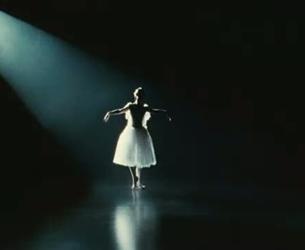Lecture 7 Lighting: What was covered? Do you think the content is relevant to your project? And why?
I was unable to make the lighting lecture – BUT I WAS DOING SOMETHING RELATED (makin’ a movie). So I had to stalk some other blogs to answer this question.
According to other blogs, key areas covered in the lecture were:
- Lighting equipment – what effects different types of equipment can add
- Maintaining exposure levels
- Lighting to communicate meaning – themes, moods, ideas, character
- Techniques of lighting – three-point lighting, hard/soft lighting, natural/artificial lighting)
- Importance of lighting in cinematography (camera setup, framing a shot, etc.)
I absolutely believe that all of this is relevant to our project. Lighting matters. In a very basic sense, no light means no picture. Cameras rely on light. In a less basic sense, lighting is part of storytelling in film. There is the aural storytelling in film, and there is the visual storytelling in film. Cinematography is the visual storytelling. Cinematography relies on lighting. So it is important to know how to manipulate lighting in a way that will achieve the desired audience effect – to get the story across to the audience.
As for the individual areas covered in the lecture:
- It’s crucial to know what different equipment can do. Once you know what each can do, you can manipulate them and achieved the desired look for the shot. On our shoot, I learnt about the joys of the bounce-board (in reflecting – and diffusing? – light). On a friend’s Film-TV1 shoot, I learnt how astoundingly well Kinos can imitate daylight.
- I don’t know much about exposure levels. I remember that on another Film-TV1 shoot this week, the director would repeatedly ask the DP about the exposure levels. I also know that there were plenty of “fix it in post” (the deadly phrase) phrases being thrown around. This may be easy to do in post-production, I don’t know. I guess I’ll find out in editing!
- As the writer for our short film, all I want to do is get the story across to the audience. Lighting is an integral part of communicating our story. We even have a surreal sequence in our film where lighting darkens and changes colour. This is supposed to express that what is happening is in the character’s mind. He has reached a state of hypnotic madness and we are seeing what he is seeing. This part of the script is essentially there to build tension high enough quickly enough so that the story can climax with enough gusto.
- Classic lighting techniques are extremely useful on set. On our shoot, I learnt about the brilliance of three-point lighting. Our DP knew how to light shots. Almost every shot was three-point lit. And this three-point lighting made everything look so good. I was so thrilled that it was all looking something like I’d imagined it to look when I wrote the script. Unnaturally bright, warm lighting on each character at the dinner table. Strange, eery, hard lighting in the surreal sequence. I think all of our lighting was artificial lighting – we put blacks up on a window to imitate night, and went from there. It was great!
- I’ve learnt that you light for each shot, rather than each scene. Well, I already sort of vaguely assumed that, but I understand it even better now. It’s important to know where lights can be put around the camera in a way that will achieve the desired look for the shot. It’s a tricky, awkward process that – when you don’t know what you’re doing – leaves you feeling like a blind person, groping the air and hoping for the best. That’s why I think it’s so, so important to do bird’s-eye drawings of camera and lighting and blocking setups (rather than just storyboards). Imagine the setup, draw the setup. Even practice the setup, to make sure it’s not just in your imagination.
Any information on lighting is absolutely relevant to our projects. Lighting is key. (And fill. And back. Ha!)
I desperately want to learn more about lighting. I’m really looking forward to the semester 2 elective that I’ve chosen – Intro to Photography. Hopefully I’ll learn a little bit more about lighting in that class. I can’t wait till I can imagine a lighting setup for a shot and be right. That will be a glorious day.
